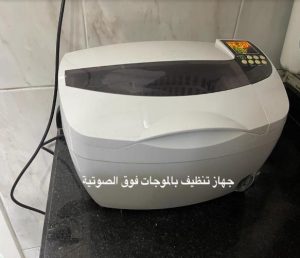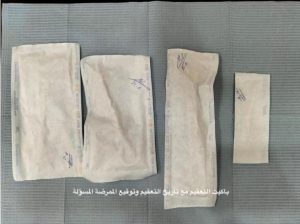What is infection control?
It is no secret to anyone that many and many viruses may be transmitted in dental clinics, such as hepatitis and C viruses [B or C], acquired immunodeficiency viruses, and various respiratory viruses.
The infection may be transmitted from one patient to another patient, from one patient to a member of the medical staff, or from the medical staff [doctor or nurse] to the patient, so we need to sterilize the dental clinic.
The process of infection control means protecting everyone, the doctor, the patient, and everyone involved, as the control of infection prevents the spread of infection between everyone and limits the transmission of diseases.
Infection control is not limited to the sterilization of tools used in the dental clinic, but also requires the application of a strict and decisive protocol regarding the work environment within the clinic and for all aspects of the patient’s journey inside the clinic from reception to completion of treatment and departure.
Infection control and medical sterilization protocol
At Wonders Dentistry Center, we rely on the recommendations of the Center for Disease Control and Prevention (CDC), as well as implement the protocol recommended by the World Health Organization WHO.
We divide the infection control protocol into four important parts:
First:
Taking the patient’s medical history and ensuring the general health of the patient. If the examination or the medical history reveals the presence of infectious diseases or diseases transmitted through blood or through direct touching of soft tissues or oral fluids and saliva, we double the sterilization procedures with him and make sure to give the patient morning appointments At non-crowded times to avoid mixing
Second:
Sterilizing the tools using the sterilization device [class B] and making sure that the tools are clean and sterilized from any residues or tissues. We will explain in detail the sterilization process in another section of the article.
Third:
Ensure that medical staff, including the dentist, nurse, and receptionist, wear personal protective equipment at all times, such as surgical pant, medical gloves, and medical masks. The use is for one patient only, and then it is disposed of.
In the case of a surgical procedure that requires direct contact with oral tissues or blood [such as dental implants], the patient also wears a surgical sleeve or a sterile plastic apron and a head protector to ensure that bacteria or microbes from the patient’s clothes do not enter the mouth.
Fourth:
Isolate the surfaces where adhesive tapes are attached to the surfaces adjacent to the use of the dentist, such as the dental chair, door handles, water taps, and cup holders. These insulators must be changed after each patient.
After the patient’s visit and before entering a new patient, all the insulating adhesive tapes are removed and all surfaces are disinfected with chlorine and disinfectants, and blood spills are disposed of using concentrated chlorine.
As for the surfaces that are far from the doctor’s work, such as reception floors, waiting chairs, etc., they are washed and polished periodically every hour.






